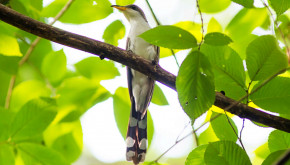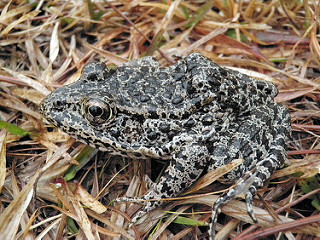
Kiera Quigley, National Association of State Foresters summer intern and Fisheries & Wildlife undergrad at Michigan State
Since the passage of the Endangered Species Act in 1973, private landowners have had to be more thoughtful about what species might be living on their property and how certain activities can affect them. Very often, the presence of a threatened or endangered species on your property can be a benefit rather than a hindrance. Protecting the biodiversity of your land increases its overall health, productivity, and aesthetic value.
Finding out if your property is home to any threatened/endangered species.
First and foremost, you will need to know if your property is home to threatened or endangered species, and which ones. This interactive map (https://www.fws.gov/endangered/species/index.html) from the US Fish and Wildlife Service (USFWS) allows you to search listed species by state. The map also includes information about each species including their range. If you’re not quite sure whether or not a species on your property could be one of the listed species, handy apps such as iNaturalist (https://www.inaturalist.org/) make identification easier than ever before.
There is another interactive map available from the USFWS that explores different conservation actions and partnerships happening in your state (https://www.fws.gov/endangered/map/index.html). If these resources still leave you with questions as to what species live on your land or how you can conserve them, try contacting your regional USFWS office (https://www.fws.gov/endangered/regions/index.html) or your state Fish and Wildlife agency (https://www.fws.gov/offices/statelinks.html).
 Additionally, each state has its own Natural Heritage Program, administered by the Department of Natural Resources or a related entity. These programs provide comprehensive information on rare species for those looking to manage their resources. Find more information on this program and it how it can help you on your state’s natural resource agency’s website.
Additionally, each state has its own Natural Heritage Program, administered by the Department of Natural Resources or a related entity. These programs provide comprehensive information on rare species for those looking to manage their resources. Find more information on this program and it how it can help you on your state’s natural resource agency’s website.
You want to manage your land for a threatened or endangered species.
So you’ve identified a threatened species on your land and you’d like to begin implementing management practices to best conserve that species—what now? Luckily, the US Fish and Wildlife Service (USFWS) has a whole suite of tools, programs, and incentives for private landowners looking to conserve threatened or endangered species on their property. Check out this list based on your management goals and objectives: https://www.fws.gov/endangered/landowners/index.html.
The conservation of threatened and endangered species is critical at this point in history. With more than half of US forest in the hands of private landowners, the utilization of these tools is one of the best ways that we can conserve biodiversity for generations to come. Happy managing!

